Future Bass is a genre that defies the ordinary, blending emotive melodies with electrifying beats.
It can transport listeners to a world of exhilarating rhythms and melodies, as well as offer a canvas for creative expression through its dynamic soundscapes.
That’s why, as a music producer, knowing how to create future bass chord progressions can help you craft tracks that resonate with audiences.
As well as capture the essence of modern electronic music and stand out in a crowded industry.
In today’s article, we’ll break down:
- The essence of Future Bass ✓
- Key characteristics of Future Bass chords ✓
- Fundamentals of chord progressions ✓
- Crafting unique and powerful chord sequences ✓
- How to make future bass beats ✓
- Utilizing MIDI for precision and creativity ✓
- Advanced chord progression techniques ✓
- Selecting the right software tools ✓
- Practical tips for track audio creation & mixing ✓
- Much more on how to create a future bass song ✓
After reading this article, you’ll be equipped to create future bass chord progressions that are not only technically sound but also emotionally captivating.
You’ll gain insights into combining melodies, rhythms, and sound design like a professional 一 enabling you to produce mind-blowing tracks.
Whether you’re a new producer or looking to refine your skills, this guide will help you master the intracacies of future bass chord progressions.
So, let’s dive in…
Table of Contents
- Understanding Future Bass
- Building Blocks of Future Bass Chord Progressions
- Crafting Your Future Bass Chord Progressions
- Advanced Techniques in Chord Progression
- Software Tools for Future Bass
- Creating a Future Bass Track from Scratch
- Bonus: Utilizing Vocal Chops and Effects
- Future Bass Chord Progressions: Final Thoughts
Understanding Future Bass
Future bass, an electrifying and innovative genre in the music world, captivates listeners when they hear it with its unique blend of elements. Let’s delve into what makes future bass so distinctive and appealing.
-
What is Future Bass?
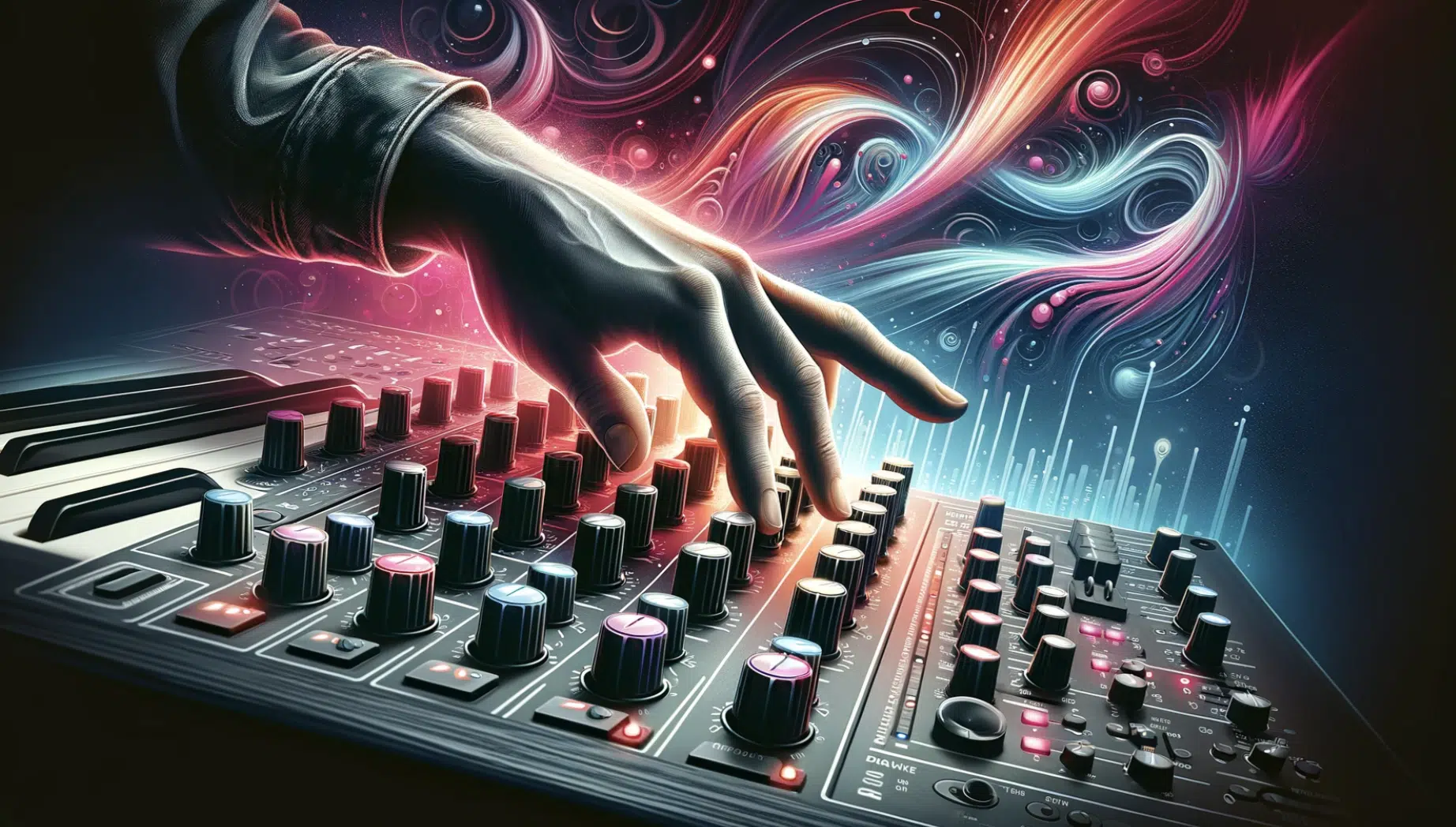
Future bass, a genre that stands at the forefront of modern electronic music, is known for its rich combination of elements from various music styles.
The future bass genre skillfully intertwines the lush harmonies and melodies often found in electronic music with the complex rhythms of trap music.
At its heart, future bass thrives on:
- Powerful synth leads
- Vibrant basslines
- Vocal chops
This creates audio tracks that are both fresh and familiar.
The sonic texture of future bass is complex, characterized by its use of various synths, from soft and mellow to hard-hitting and gritty.
This genre frequently employs major scales and minor scales to evoke a wide range of emotions 一 from upbeat joy to introspective melancholy.
Future bass tracks often feature an expansive range of pitch and octave variations, lending them a dynamic and ever-changing quality.
This versatility makes future bass a favorite among both listeners and producers.
-
The Role of Chords in Future Bass
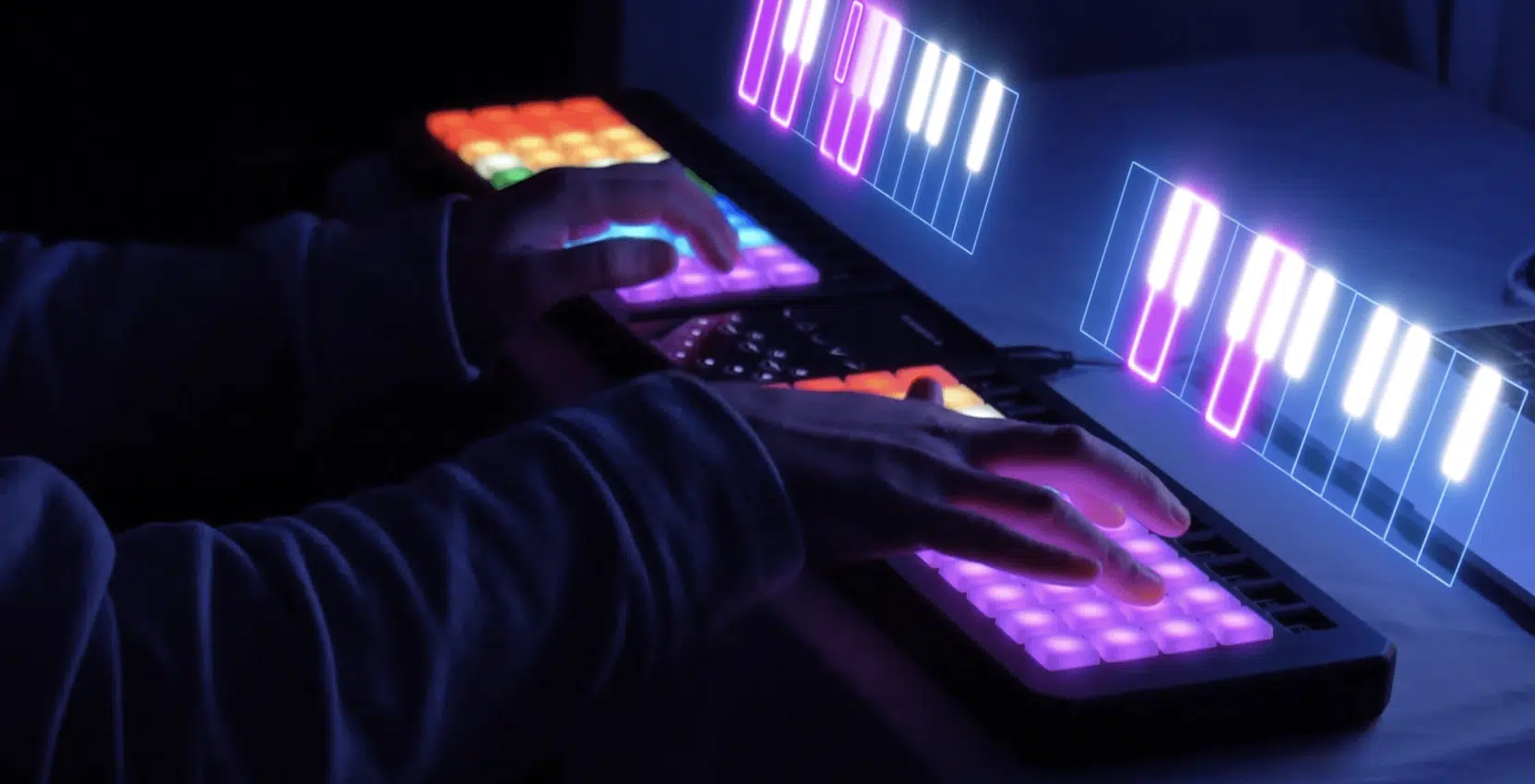
In the realm of future bass, chords are more than just a sequence of notes – they are the narrative soul of the track.
These chords set the emotional tone, guiding the track’s energy and providing a harmonious foundation for the melody and rhythm.
Understanding the art of crafting these chords (from simple triads to complex extended chords) is essential for any future bass producer.
The chord progressions in future bass are particularly notable for their ability to convey a wide spectrum of emotions.
These chord progressions, whether straightforward or intricate, serve a singular purpose: to evoke feelings that resonate deeply with the listener.
Whether it’s a surge of bliss, a touch of nostalgia, or a sense of anticipation, the right chord progression can transport listeners on an unforgettable emotional journey.
Building Blocks of Future Bass Chord Progressions
To create compelling chord progressions in future bass, a solid grasp of music theory and a spirit of experimentation is vital. Let’s explore the foundational elements that form these mesmerizing progressions.
-
Basic Music Theory Behind Chord Progressions
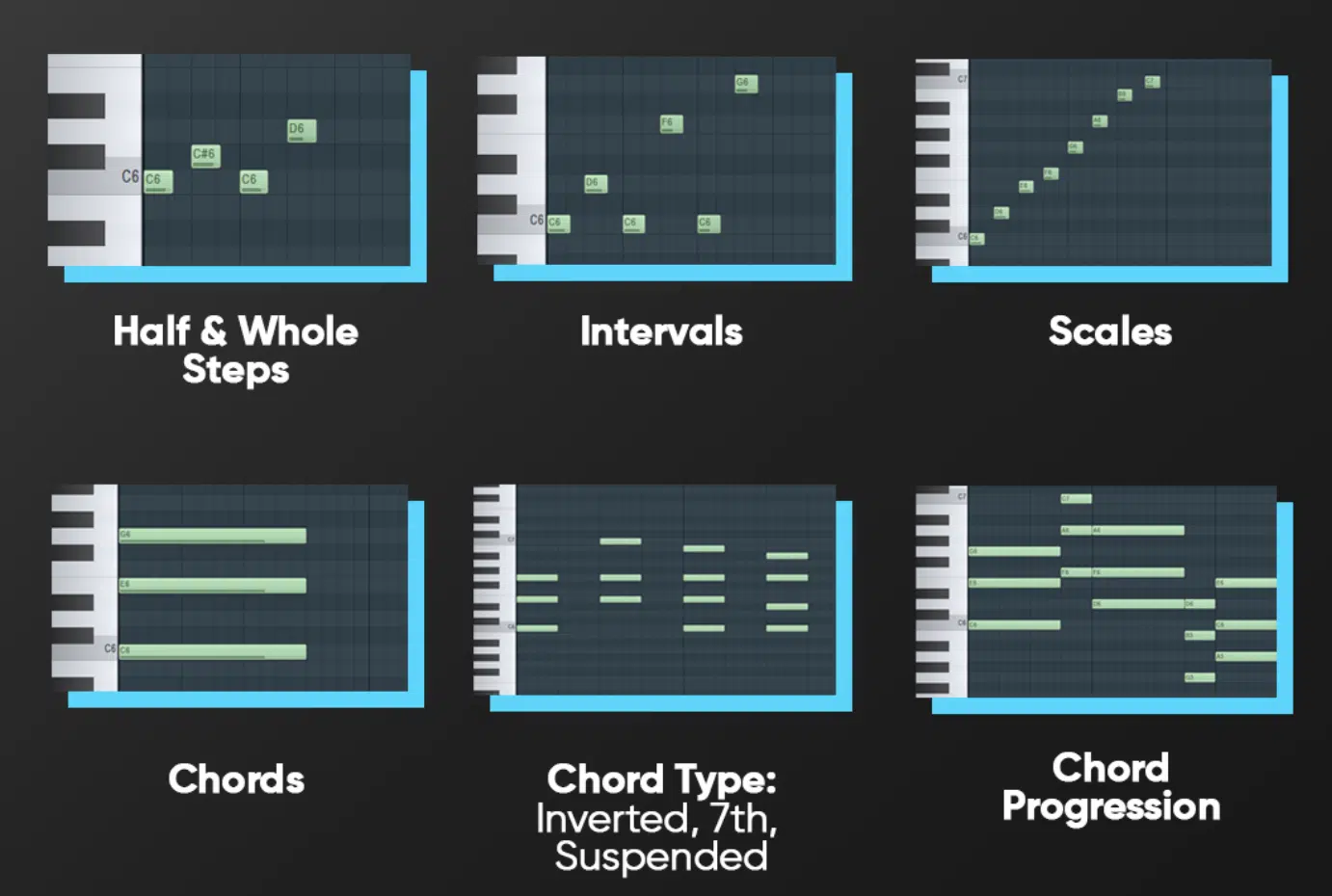
Music theory is the cornerstone of all chord progressions, offering a framework for understanding how different chords interact and create emotional impact.
In future bass, music theory often involves experimenting with various chord progressions.
It draws from both major and minor scales to craft a soundscape that is harmonically rich and emotionally resonant.
A fundamental aspect of music production in future bass is the effective use of notes and scales.
Understanding the relationship between different notes and how they come together to form chords is crucial.
This knowledge enables producers to achieve chord progressions that are not only technically sound but also emotionally compelling.
-
Popular Chord Progressions in Future Bass
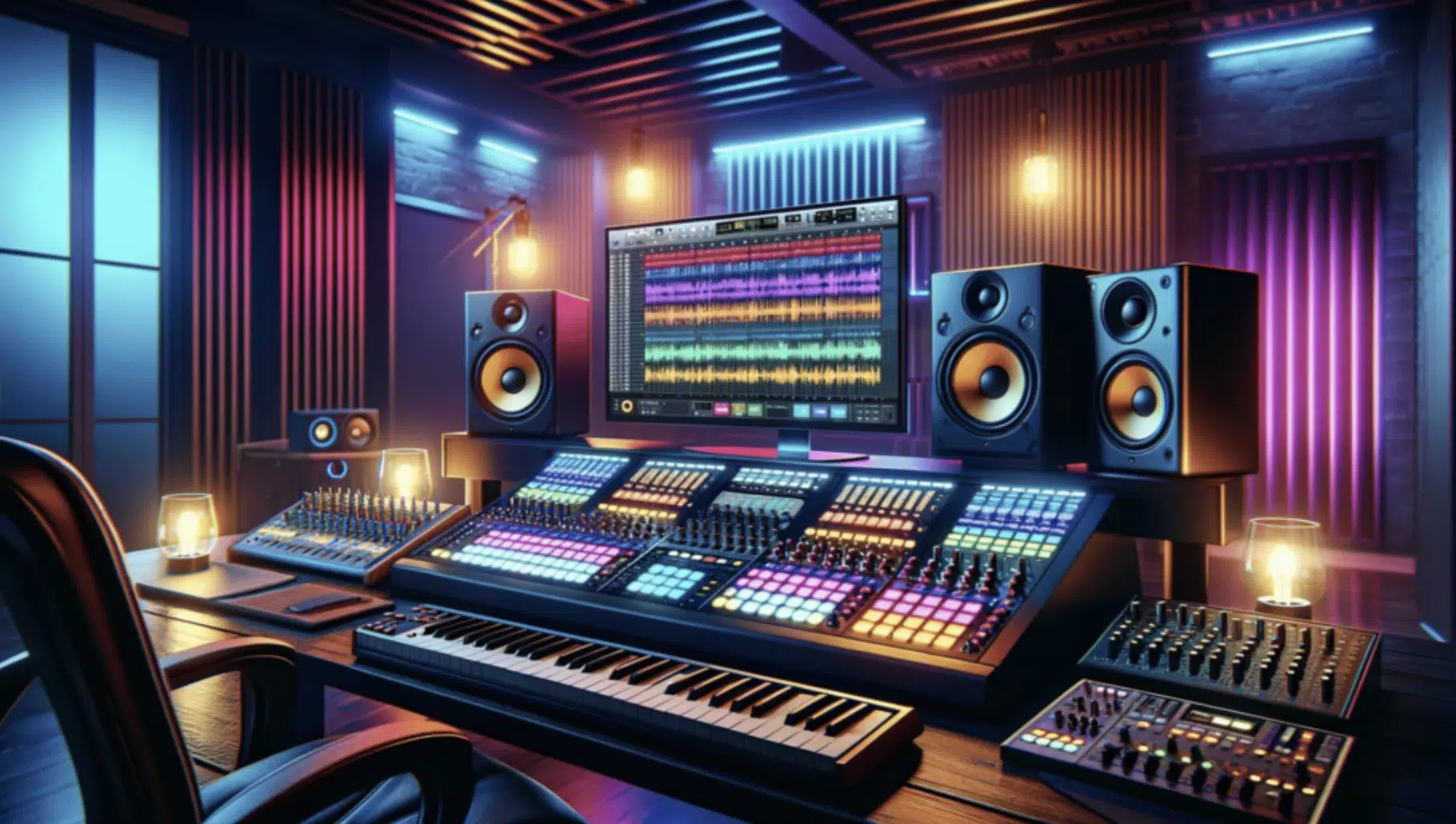
In future bass, certain chord progressions have become almost iconic, often defining the genre’s most memorable tracks.
These future bass chord progressions typically balance emotional resonance with rhythmic energy, creating a compelling musical structure.
One popular chord progression in the future bass genre is the I-IV-V-vi chord sequence.
This progression includes the following chords:
- Root note (I)
- Subdominant (IV)
- Dominant (V)
- Submediant (vi)
It creates a sense of uplifting motion 一 perfect for future bass tracks aiming for an exhilarating feel.
For example, in the key of C Major, this progression would be C (I), F (IV), G (V), and A minor (vi).
Another commonly used progression is the vi-IV-I-V pattern.
This future bass chord progression starts with the submediant root note.
It adds a slightly more introspective or melancholic touch before resolving into the more optimistic I and V chords.
In future bass tracks, this progression often underpins the verses or breakdown sections, providing a contrast to more energetic choruses.
Future bass also frequently employs modal interchange, where chords from a parallel minor or major scale are borrowed to add color.
-
Experimenting with Extended Chords
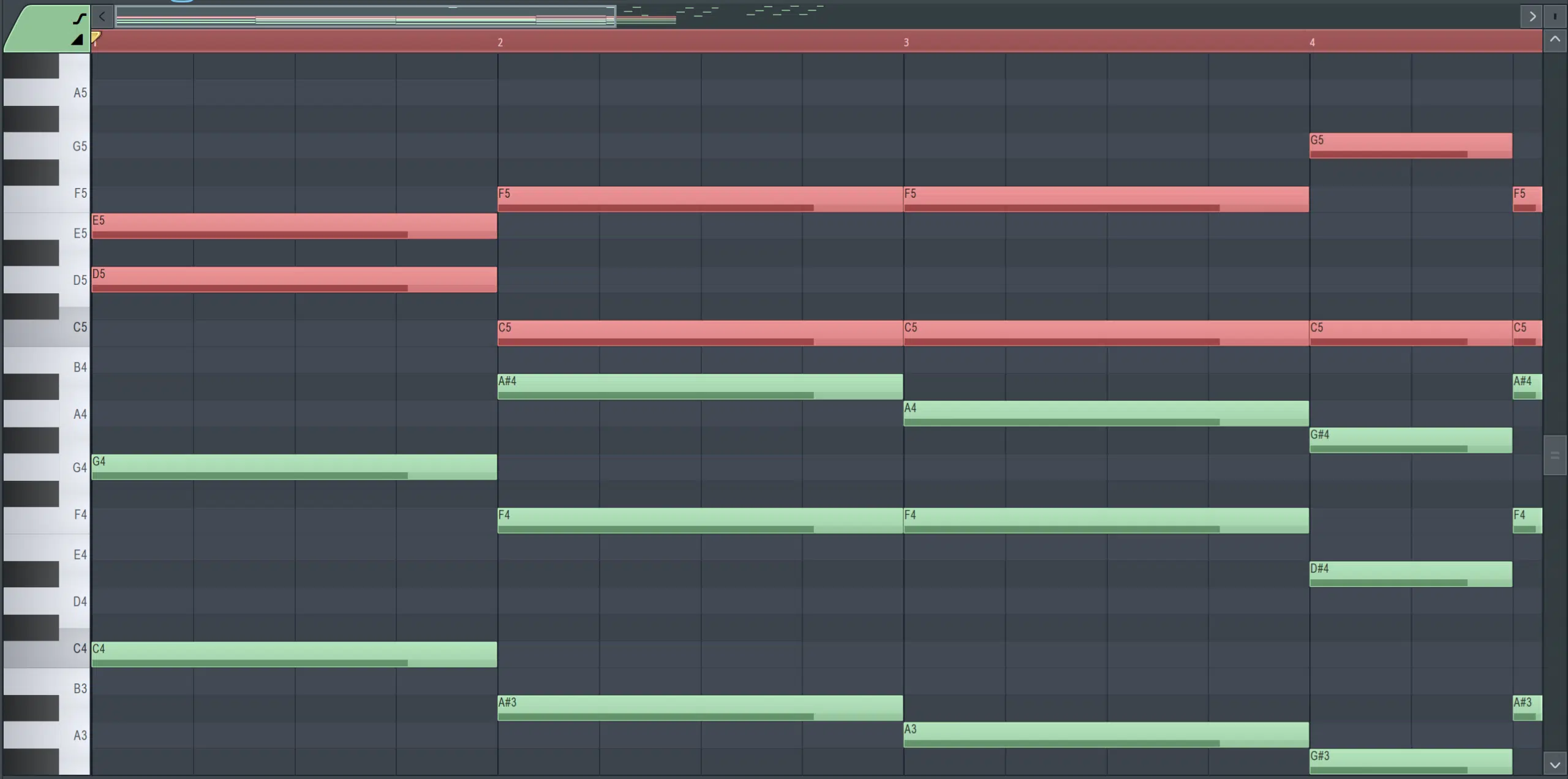
Extended chords play a significant role in the sound design of future bass.
Extended chords, which include additional notes beyond the basic triad, offer a richer and more complex sound.
Experimenting with extended chords can lead to discovering unique harmonic textures that set a future bass song/beat apart in the crowded landscape of electronic music.
In future bass, the use of extended chords is not just about complexity for its own sake.
Instead, it’s about finding the right balance between harmonic richness and the overall feel of the track.
Producers often use these chords to add depth and dimension to their music to create a sound that is both sophisticated and accessible.
Crafting Your Future Bass Chord Progressions
Making future bass chord progressions is both an art and a science. It requires a blend of technical knowledge and creative intuition. Let’s look at how you can craft chord progressions that bring your future bass tracks to life.
-
Choosing the Right Chords

Selecting the right chords for your future bass track is crucial.
All the chords you choose set the emotional tone and define the track’s harmonic structure.
When choosing chords, consider their emotional impact and how they’ll interact with your main elements like:
- Melody
- Bass
- Rhythm
A good starting point is to decide on the key of your track.
Major keys often evoke a sense of happiness and energy (think jazzy chords) while minor keys can convey a more introspective or somber mood.
From there, experiment with different chords within the key, focusing on how each chord feels in the progression.
NOTE: In future bass, extended chords like seventh, ninth, or eleventh chords can add richness and sophistication.
For instance, replacing a simple C Major chord with a C Major 7 can create a more nuanced and emotive sound.
-
Writing Chord Progressions for Impact
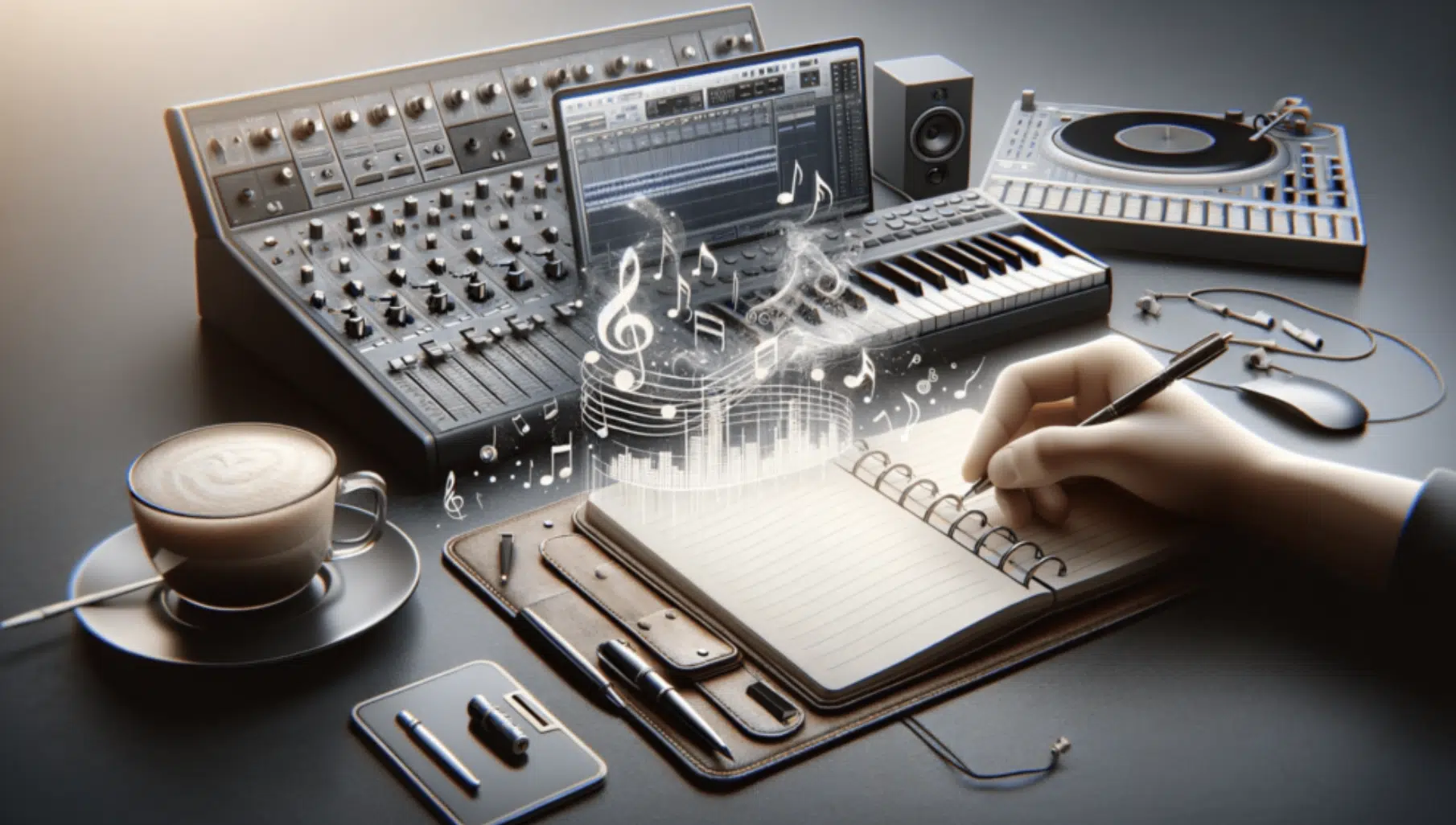
Creating chord progressions that make a lasting impact in future bass involves more than just stringing chords together.
It’s about creating a progression that tells a story, building tension and release in a way that captivates the listener.
When writing chord progressions, consider how each chord contributes to the overall narrative of the track.
One effective technique is to start with a simple chord progression and gradually introduce variations or additional notes to create complexity and interest.
This approach keeps the listener engaged, as the future bass chord progressions evolve throughout the track.
Paying attention to the emotional vibe of the chord progression is also crucial 一 it should align with the track’s mood and intention.
This way, the final result will be fluid, captivating, and professional.
-
Using MIDI for Chord Progressions
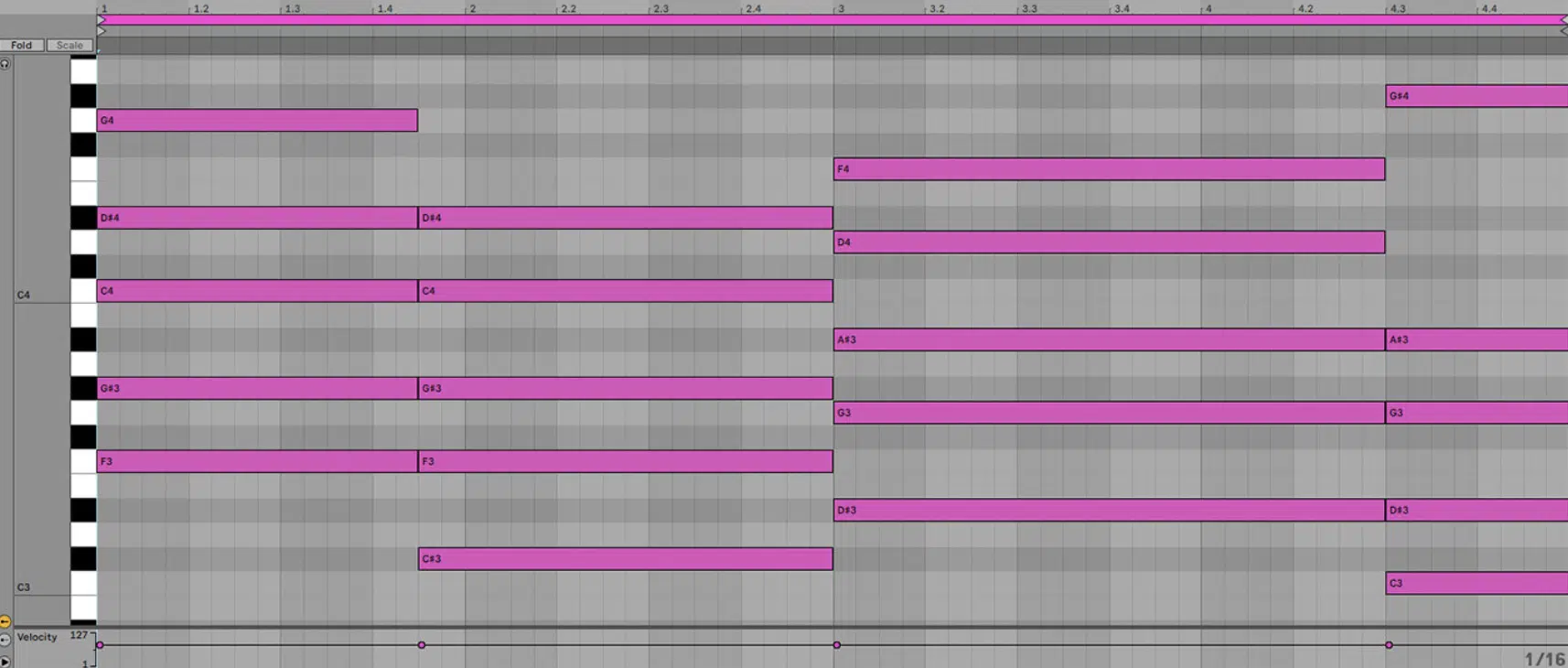
MIDI is a powerful tool for creating future bass chord progressions.
Using MIDI, you can easily experiment with different chord structures and progressions until you find the perfect fit for your beats.
Remember, when you make future bass songs, it’s all about experimentation and getting creative.
Start by laying down a basic chord progression in your MIDI editor.
From there, you can manipulate the MIDI notes to experiment with different:
- Chord voicings
- Inversions
- Rhythms
This process allows for quick iteration and exploration of creative ideas.
MIDI also enables precise control over the velocity and duration of each note, which can dramatically affect the feel of your chord progression.
For example, adjusting the velocity of the notes in a chord can emphasize certain notes 一 adding a dynamic quality to the progression.
Another advantage of a MIDI track is the ability to easily transpose your chord progression into different keys.
It will help make the final result very intriguing.
This can be particularly useful when collaborating with vocalists or other musicians, as it allows you to adjust the key/scale of the progression to suit their range.
Advanced Techniques in Chord Progression
Moving beyond the basics, let’s explore some advanced techniques that can elevate your future bass chord progressions to new heights.
-
Playing with Rhythm and Melody
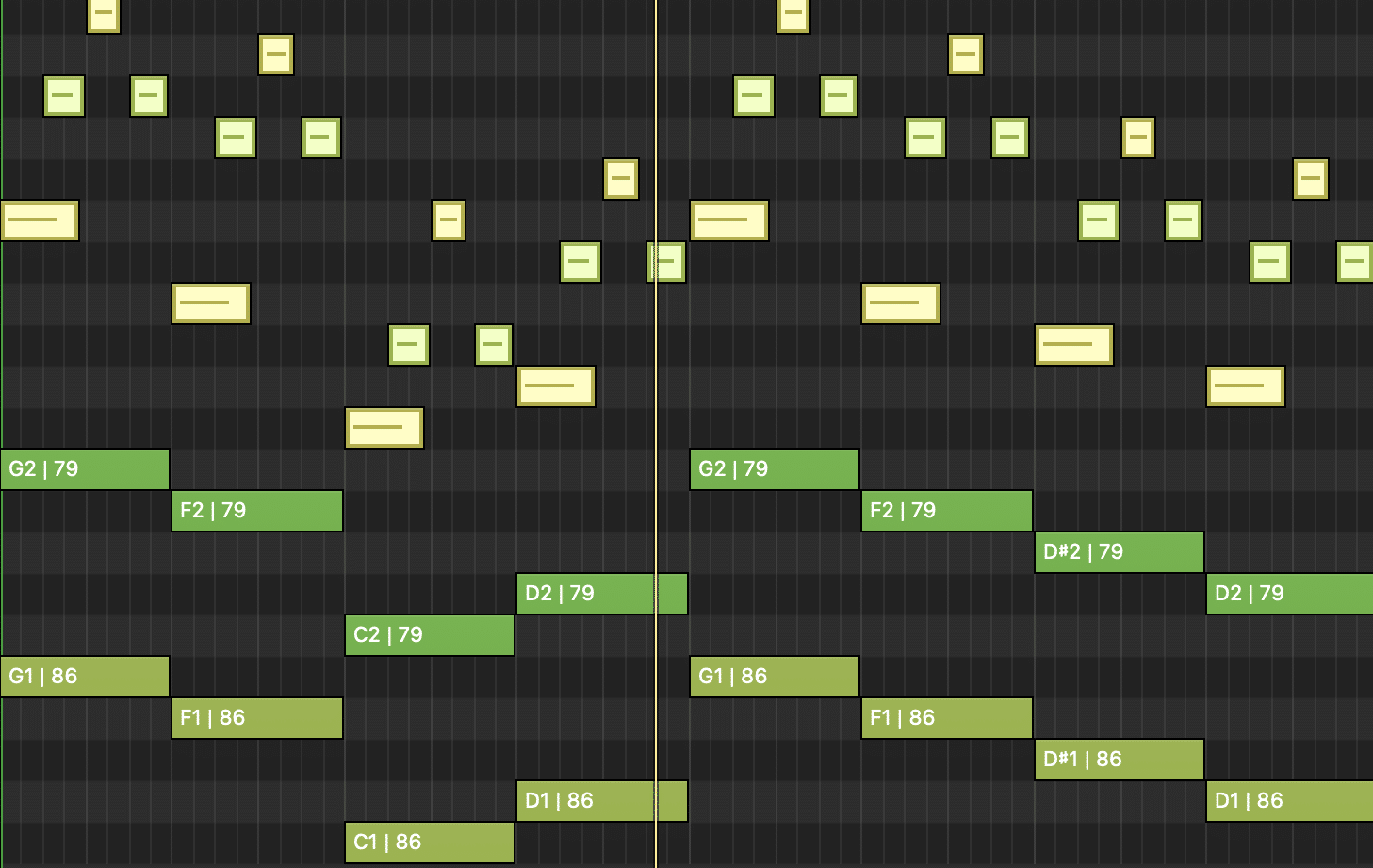
In future bass, the interplay between rhythm and melody is crucial in creating a compelling chord progression.
By varying the rhythm of the chords, you can add a sense of movement and excitement to your tracks.
This can involve:
- Syncopation (where chords are played off the beat)
- Using different rhythmic patterns to add interest
Melody, on the other hand, works hand in hand with the chord progression.
A strong melody can enhance the emotional impact of the chords 一 while a weak melody can detract from it.
When you write melodies in future bass, they often feature pitch bends and octave jumps, adding an extra layer of expressiveness to the track.
So remember, when writing future bass melodies, always get creative and try out new methods.
-
Sound Design for Chords
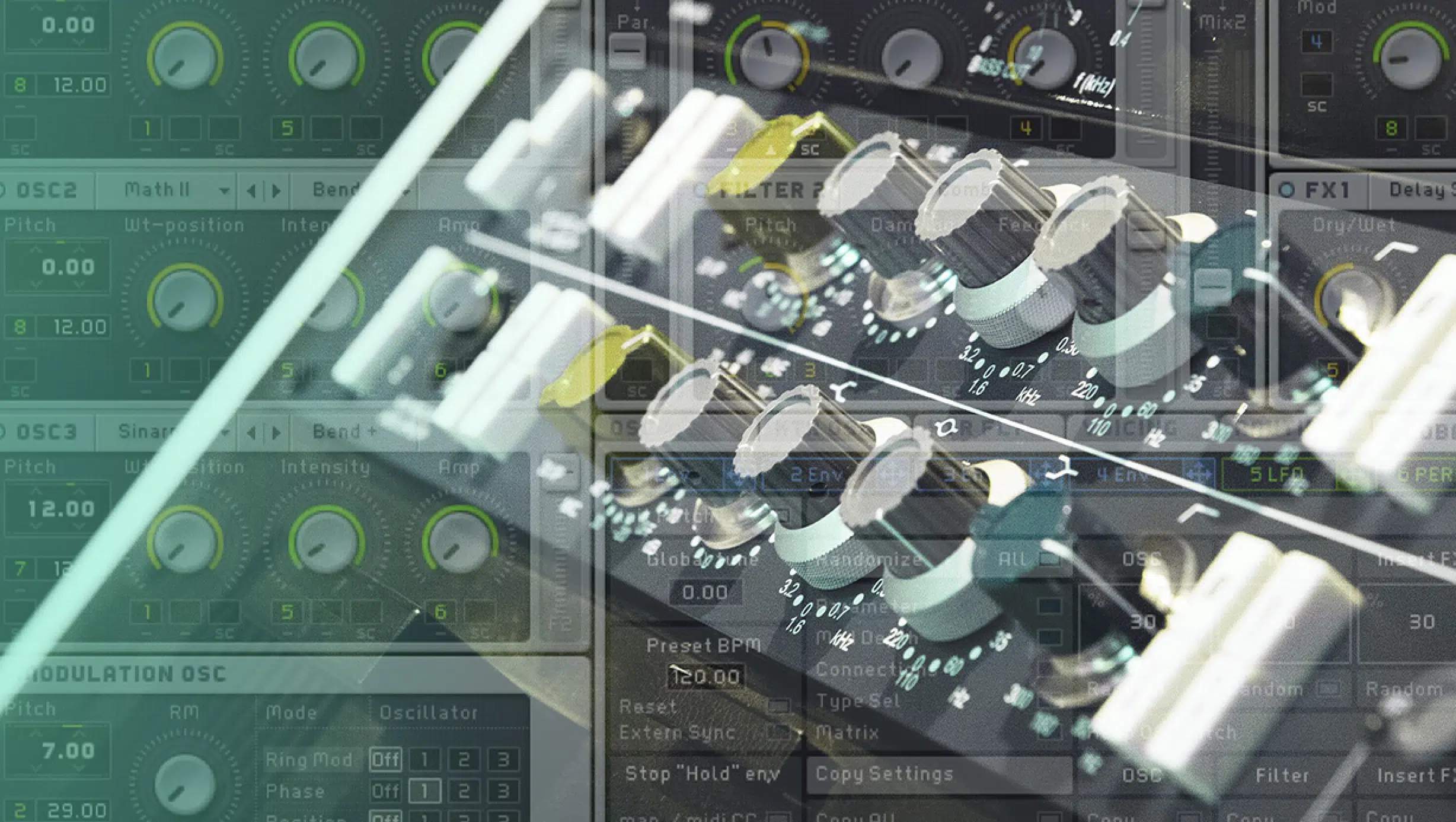
In future bass, sound design plays a pivotal role in defining the character of your chord progressions.
The choice of synth sounds, effects, and processing techniques can significantly influence the emotional impact of your chords.
When designing sounds for your chords, consider the role they play in the track.
Ask yourself: are they meant to be upfront and bold, or more atmospheric and subtle?
- For a more prominent sound 一 Opt for a bright, sawtooth-based synth with a sharp attack.
- For a subtler feel 一 A pad sound with a slower attack and more modulation might be more appropriate.
Effects like reverb and delay can add depth and space to your chords, making them more immersive.
However, it’s important to use these audio effects carefully to avoid muddying the mix.
Sidechain compression is another popular technique in future bass, creating a rhythmic pumping effect that can add energy and movement to your chords progressions.
Experimenting with layering different sounds can also create interesting textures.
For instance, layering a piano sound with a synth pad can combine the organic feel of the piano with the lushness of the pad.
This will create a rich and complex chord sound.
Software Tools for Future Bass
The creation of future bass chord progressions is greatly enhanced by the use of specific software tools. Each tool brings its unique capabilities to the table, allowing for a range of creative possibilities.
-
Logic Pro in Future Bass Production
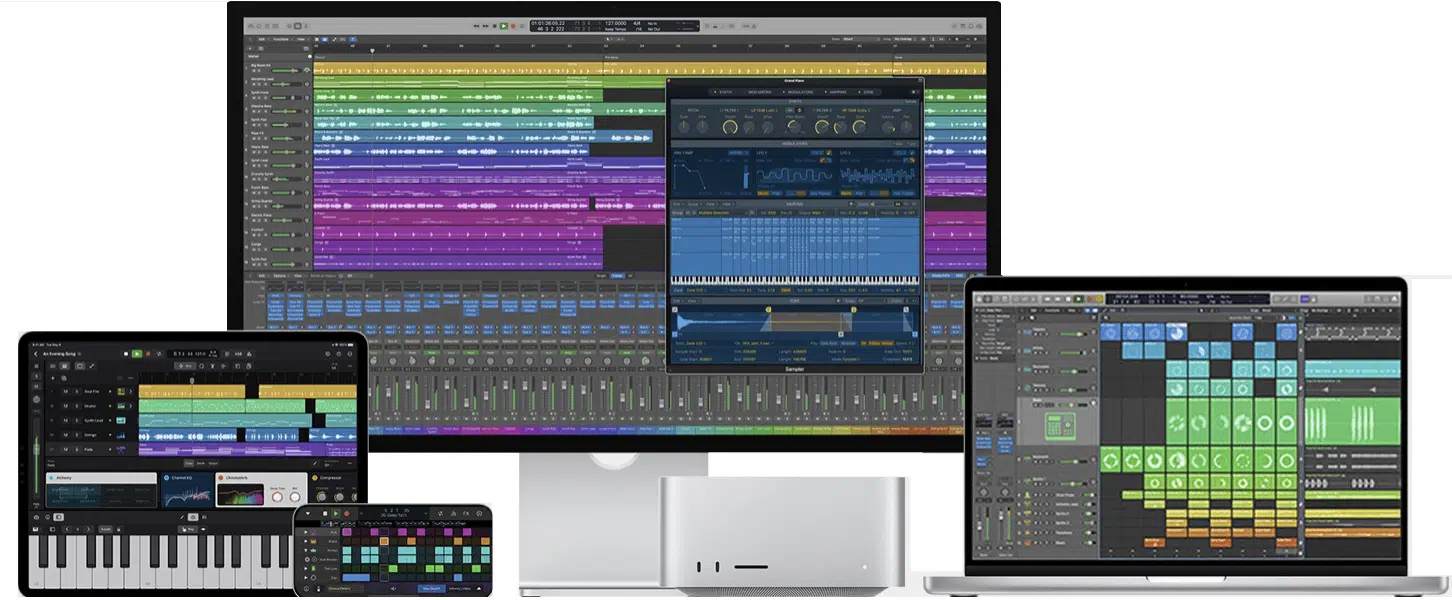
Logic Pro, a mainstay in the arsenal of many future bass producers, offers a comprehensive suite of features tailored for crafting intricate chord progressions.
Its user-friendly interface makes it an ideal choice for beginners and seasoned pros.
The software’s robust MIDI capabilities allow for precise editing and manipulation of chord progressions, ensuring that every note and chord is placed with intention.
Another strength of Logic Pro lies in its vast library of sounds and instruments.
Producers can explore a plethora of synth options 一 finding those perfect textures and tones that define the future bass genre.
The ability to layer these synths, coupled with Logic Pro’s advanced mixing tools, enables a rich and full sound essential for impactful future bass tracks.
Logic Pro’s flexibility in sound design is unmatched.
With its array of effects and processing tools, producers can experiment with different sonic qualities, from lush reverbs to crisp delays.
They add depth and dimension to their chord progressions.
This level of control and versatility makes Logic Pro a preferred choice for those looking to leave their mark in the future bass scene.
-
Ableton Live for Future Bass Chord Progressions
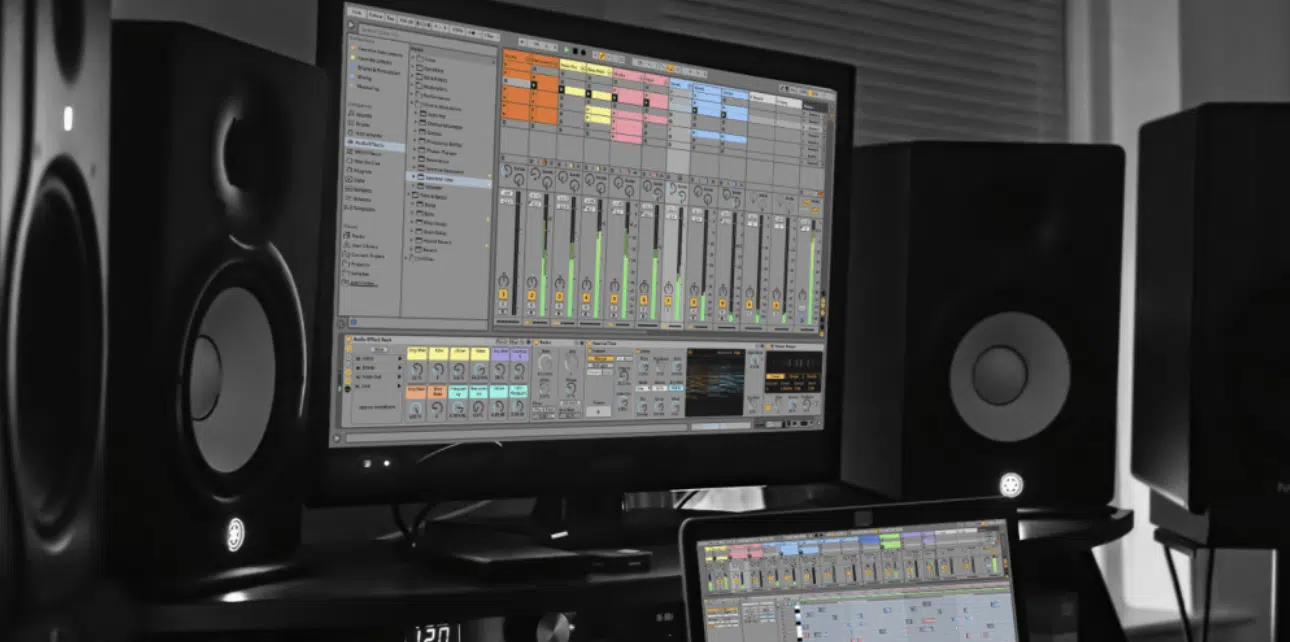
Ableton Live stands out for its workflow efficiency and live performance capabilities, making it another top choice for future bass producers.
Its session view provides a unique approach to composing music, allowing producers to experiment with future bass chord progressions in a non-linear fashion.
This spontaneity can lead to discovering new and interesting chord sequences that might not emerge in a traditional linear workflow.
In Ableton Live, the ease of dragging and dropping a MIDI clip streamlines the process of trying out different chord progressions.
The software’s powerful MIDI effects (such as the arpeggiator and chord trigger) offer additional ways to creatively manipulate chord progressions.
These tools can transform simple chords into complex and evolving patterns, a characteristic often found in future bass tracks.
NOTE: Ableton Live’s integration with various MIDI controllers and hardware synths opens up a realm of tactile control over chord progressions.
This hands-on approach can lead to a more organic and intuitive development of chord sequences 一 giving future bass songs a sense of liveliness and spontaneity that is hard to replicate with software alone.
-
Other Useful Plugins and Instruments
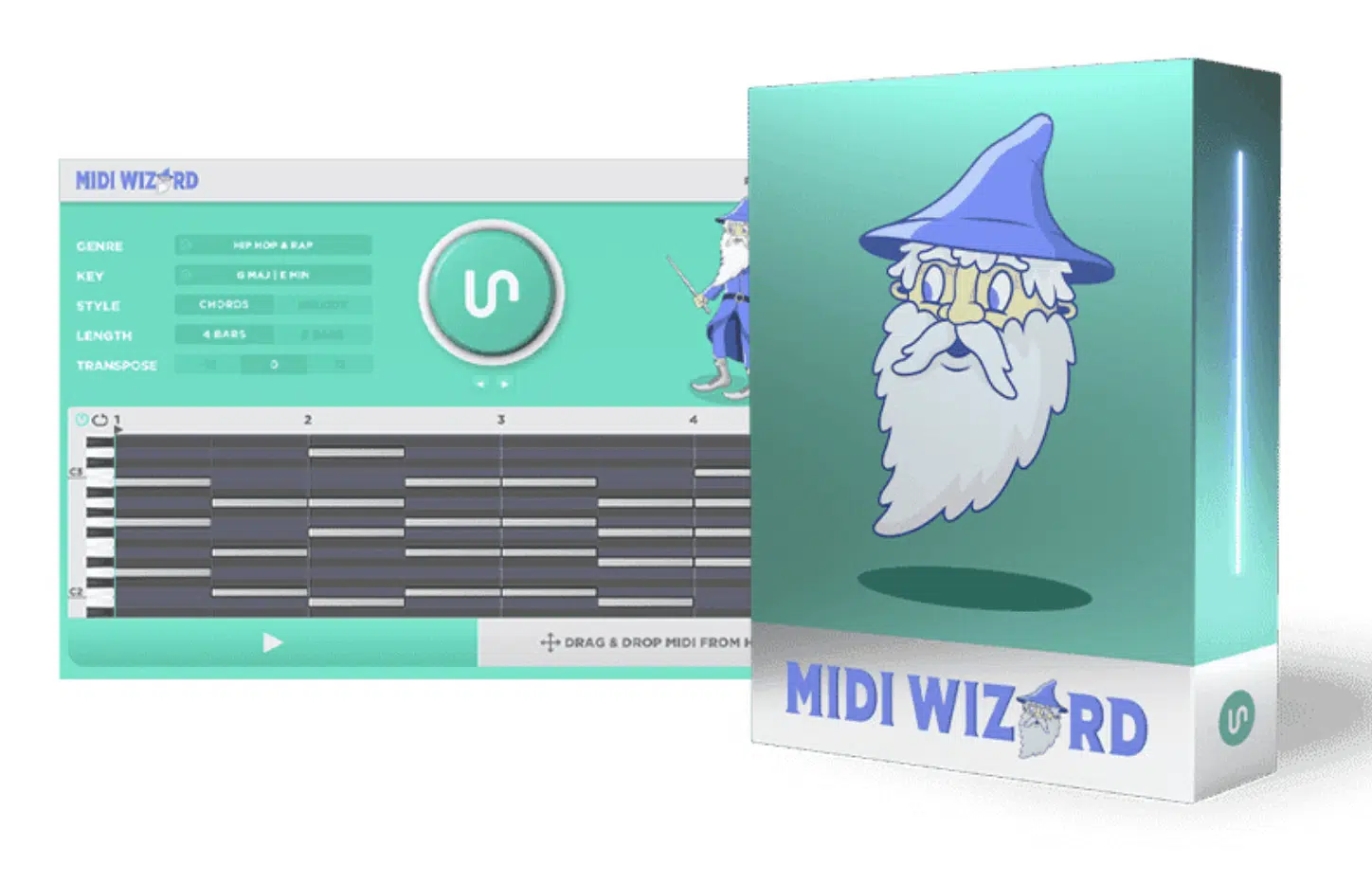
Beyond Logic Pro, Ableton Live, and FL Studio, there are numerous plugins, like MIDI Wizard, and virtual instruments that significantly enhance the production of future bass chord progressions.
Synth plugins like Massive and Serum are renowned for their powerful sound engines and extensive modulation capabilities.
These plugins allow producers to design unique sounds from scratch, tailor-made for their specific chord progressions.
Sample packs also play a crucial role in creating future bass chord progressions.
A sample pack provides a vast array of pre-recorded sounds that can be used to inspire or complement chord progressions.
From ethereal pads to gritty basses, these samples (free or paid) can add an extra layer of depth/texture to future bass tracks.
Additionally, plugins that focus on vocal processing, such as VocalSynth and Harmony Engine, are particularly useful in future bass.
Creating a Future Bass Track from Scratch
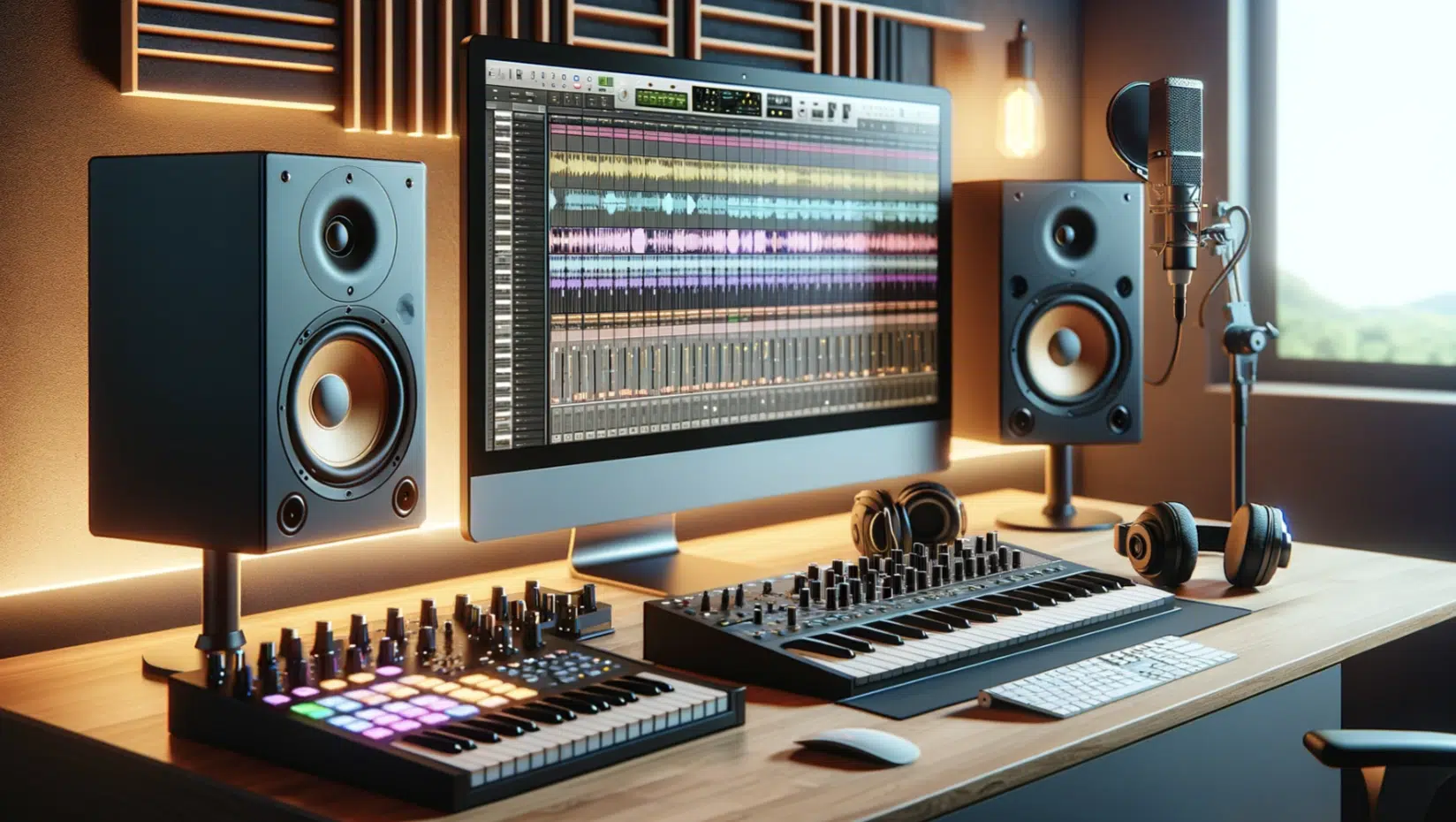
Starting a future bass track from scratch can seem daunting, but with the right approach, it can be a rewarding creative process.
Begin by establishing a basic chord progression using a simple synth sound.
This will form the foundation of your unique track.
Experiment with different chord shapes and structures until you find a progression that resonates with the intended mood.
Next, enhance your chord progression by adding layers of synths and textures.
Consider using pads for atmospheric depth and lead synths for added melodic interest.
Listen to how these additional layers interact with your initial chord progression 一 ensuring they complement rather than overpower it.
No one element should be loud or obnoxious.
As you develop your future bass song (from the first half to the second half), incorporate more elements like:
- Drum beats
- Basslines
- Vocal chops
These components will add rhythm and energy to your track, creating a more cohesive and polished future bass piece.
Remember to continually refer back to your chord progression, ensuring it remains the focal point of your track.
Bonus: Utilizing Vocal Chops and Effects
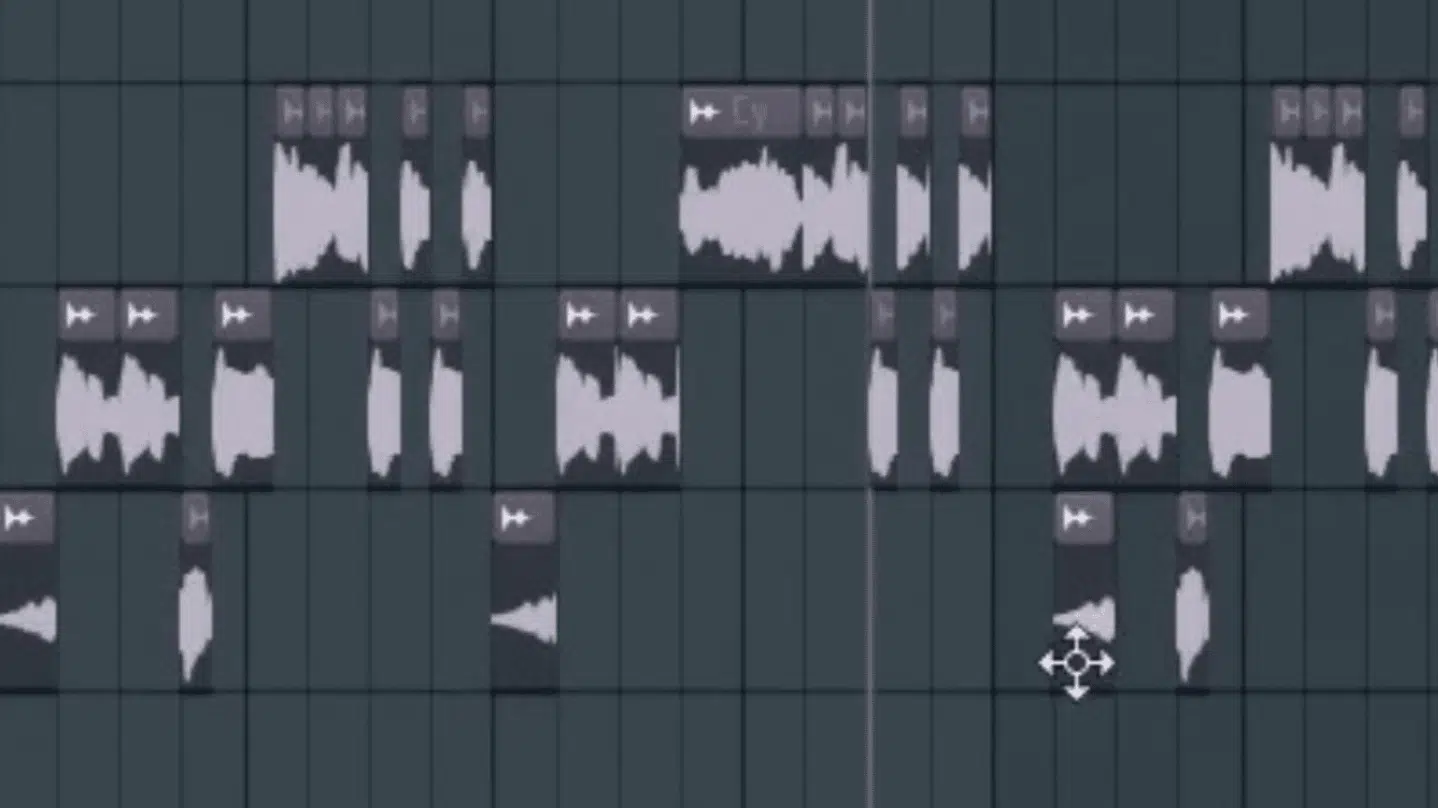
Vocal chops are a signature element in future bass and can add a unique dimension to your chord progressions.
To achieve effective vocal chops:
- Select a vocal sample that fits the mood of your track.
- Slice the sample into smaller segments.
- Rearrange them to form a rhythmic pattern that complements your chord progression.
- Apply effects such as reverb, delay, and pitch modulation to your vocal chops.
These effects can also be used to create a sense of space and depth around the vocal chops, making them a more integral part of the overall sound.
Experiment with different processing techniques to find the perfect balance that enhances the emotional impact of your chord progression.
It will make people excited to listen to your beat.
PRO TIP
When integrating vocal chops with your chord progression, consider their placement in the track.
They can be used as a lead element, weaving in and out of the chords, or as a background texture that adds complexity to the arrangement.
The key is to ensure that the vocal chops enhance the harmonic (basic) structure of your chord progression, adding to the track’s overall narrative.
Future Bass Chord Progressions: Final Thoughts
n the vibrant world of future bass, mastering the art of future bass chord progressions is key to distinguishing your music.
These progressions are not just sequences of chords; they are the heartbeat of your tracks.
It can impart them with depth, texture, and dynamics to help your beat shine.
To take your productions to the next level, consider incorporating the free, insanely beneficial Essential Advanced MIDI Chord Progressions pack into your toolkit.
This collection features 24 unique and sophisticated MIDI chord progressions 一 providing you with an array of advanced harmonic options that go beyond the basics.
Utilizing these progressions in your future bass tracks will enhance your sound tenfold.
As well as set you apart from the majority of producers who rely on standard chords and progressions.
As you continue to explore and create within the realm of future bass, remember the power of innovative chord progressions in shaping your musical identity.
Experiment, practice, and refine your skills in order to create these enticing future bass chord progressions and watch your tracks rise to the top of the charts.
Until next time…





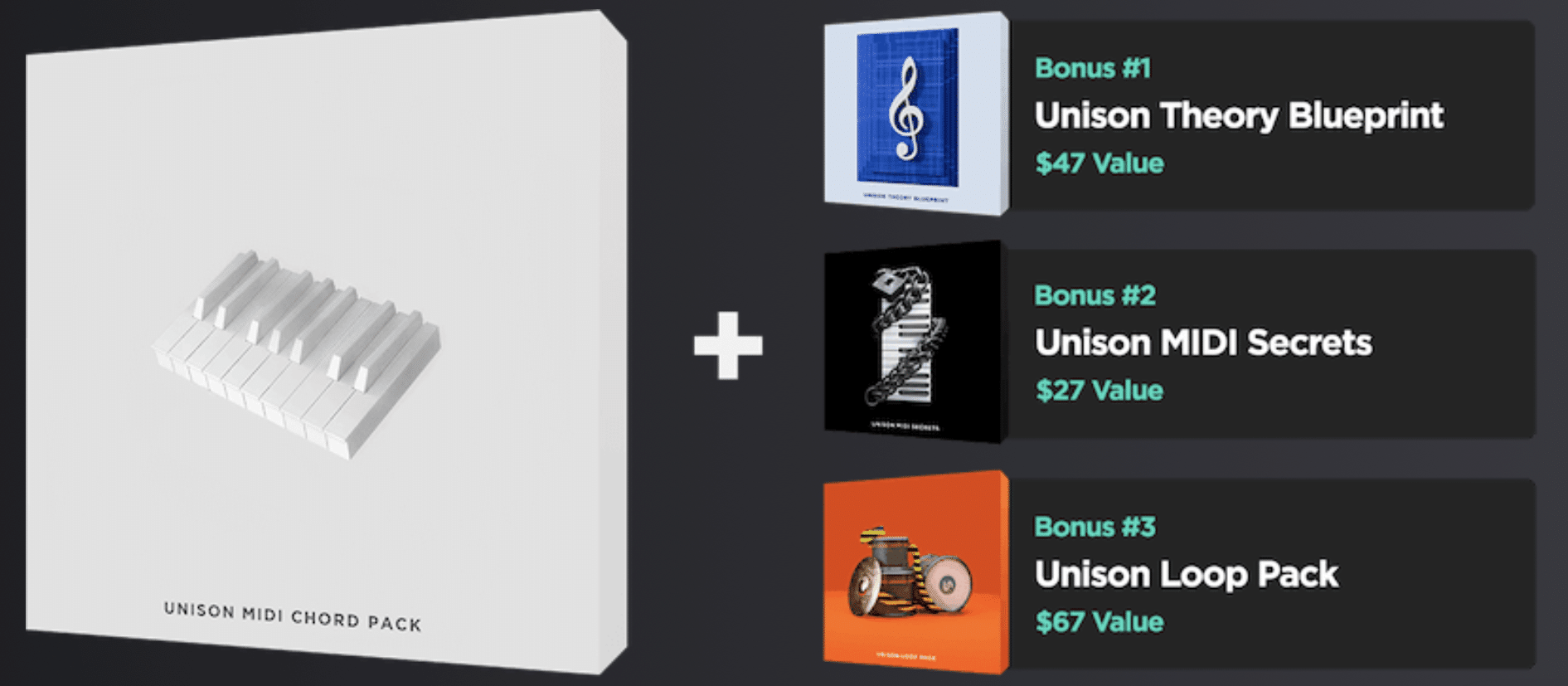


Leave a Reply
You must belogged in to post a comment.